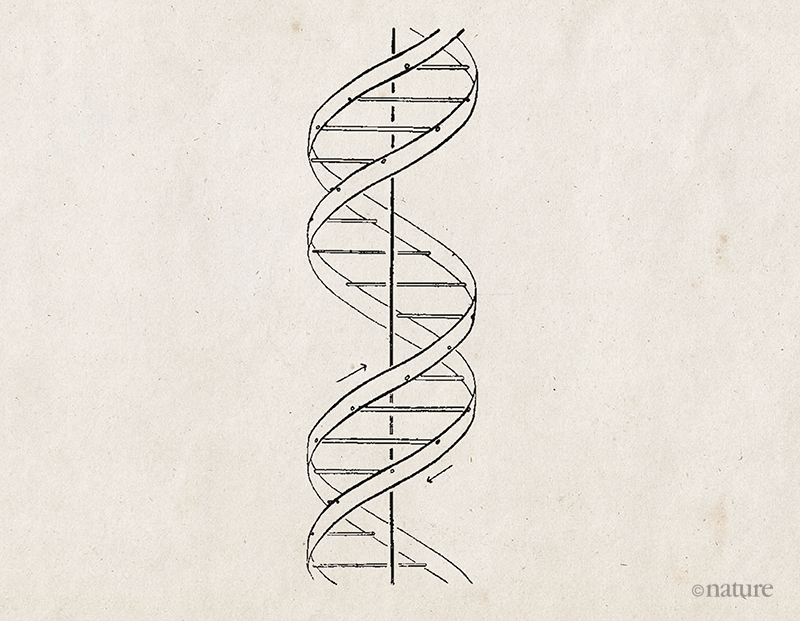In the early 1950s, the identity of genetic material was still a matter of debate. The discovery of the helical structure of double-stranded DNA settled the matter — and changed biology forever.
In an article of just over a page, with one diagram, they transformed the future of biology and gave the world an icon — the double helix. Recognizing at once that their structure suggested a “possible copying mechanism for the genetic material”, they kick-started a process that, over the following decade, would lead to the cracking of the genetic code and, 50 years later, to the complete sequence of the human genome.
Until that time, biologists had still to be convinced that the genetic material was indeed DNA; proteins seemed a better bet. Yet the evidence for DNA was already available. In 1944, the Canadian–US medical researcher Oswald Avery and his colleagues had shown that the transfer of DNA from a virulent to a non-virulent strain of bacterium conferred virulence on the latter. And in 1952, the biologists Alfred Hershey and Martha Chase had published evidence that phage viruses infect bacteria by injecting viral DNA.
Watson, a 23-year-old US geneticist, arrived at the Cavendish Laboratory at the University of Cambridge, UK, in autumn 1951. He was convinced that the nature of the gene was the key problem in biology, and that the key to the gene was DNA. The Cavendish was a physics lab, but also housed the Medical Research Council’s Unit for Research on the Molecular Structure of Biological Systems, headed by chemist Max Perutz. Perutz’s group was using X-ray crystallography to unravel the structures of the proteins haemoglobin and myoglobin. His team included a 35-year-old graduate student who had given up physics and retrained in biology, and who was much happier working out the theoretical implications of other people’s results than doing experiments of his own: Francis Crick. In Crick, Watson found a ready ally in his DNA obsession.
However, DNA was the project of Maurice Wilkins at King’s College London. Crick was a friend of Wilkins’s, and it wasn’t the done thing for labs to compete over the same molecule. Moreover, the experienced X-ray crystallographer Rosalind Franklin had just taken over experimental work on DNA at King’s. Owing to a misunderstanding about their relative roles, Franklin’s relationship with Wilkins was frosty.
None of this stopped Watson and Crick from speculating about how the components of the DNA molecule — the four nucleotide bases adenine, guanine, thymine and cytosine, connected to a backbone of sugars and phosphates — might assemble into fibres. They thought that a helix was a likely option: the US chemist Linus Pauling and his co-workers had just demonstrated that peptide chains formed α-helices. Crick himself had co-authored a paper on the theory of diffraction of X-rays by helices. In late 1951, he and Watson combined that theory with what they knew about the chemistry of DNA, and what they remembered of talks given by Wilkins and Franklin, to build a model of the DNA structure.
To Read More: Click Here
References:
Georgina Ferry (October 9, 2019). The structure of DNA. Nature. Retrieved from https://buff.ly/30Y9Zt6




